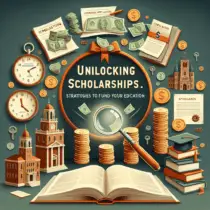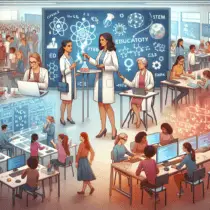Unlocking the Future of Technology Through AI and Machine Learning Scholarships
The future of technology is intertwined with artificial intelligence (AI) and machine learning (ML), and unlocking this future requires investing in education and talent development. Scholarships play a critical role in making advanced study in these fields accessible to talented individuals around the world. By offering financial support, these scholarships enable students to pursue their studies without the burden of financial constraints, thereby cultivating the next generation of AI and ML experts.
Impact of Scholarships on AI and Machine Learning
Scholarships in AI and ML are designed to support students who show promise in these areas, providing them with the necessary resources to excel. The importance of these scholarships cannot be overstated, as they open doors for individuals who might otherwise be unable to pursue such specialized education. The focus on AI and ML is particularly significant given the increasing reliance on these technologies in various sectors, ranging from healthcare to finance.
Global Opportunities for Aspiring AI Experts
£4000 International Country Award 2023
One notable opportunity is the £4000 International Country Award 2023, which is aimed at attracting talented students from around the globe. This scholarship supports individuals pursuing degrees in AI and ML, allowing them to access top-quality education. Such scholarships help create a diverse pool of talent, which is crucial for the global development and implementation of AI technologies.
The £4000 award not only lessens the financial burden but also encourages cultural and intellectual exchange among students from different countries. By studying together, these students bring various perspectives and ideas to the table, fostering innovation and collaboration in AI and ML research.
Encouraging Innovation with Financial Support
$2,000 Pinnacle Arts Scholarship, Australia 2024
Another significant scholarship is the $2,000 Pinnacle Arts Scholarship, Australia 2024. While primarily intended for the arts, this scholarship has been extended to include interdisciplinary studies combining art with technology, such as AI-driven art projects. This initiative recognizes that AI and ML are not limited to conventional tech industries but are also transforming creative fields.
By supporting students who are exploring the intersection of art and AI, the Pinnacle Arts Scholarship encourages innovative approaches to technology. This kind of support is essential for fostering creativity and out-of-the-box thinking, which can lead to groundbreaking advancements in AI applications.
Bridging the Gap in Emerging Economies
In many emerging economies, access to advanced education in AI and ML is limited by financial and infrastructural constraints. Scholarships dedicated to students from these regions are vital for bridging this gap. Programs such as the £4000 International Country Award 2023 specifically aim to attract and support talent from underrepresented areas, thereby contributing to a more equitable global technological landscape.
Boosting the Workforce for Future Technologies
The tech industry is facing a growing demand for skilled professionals in AI and ML. Scholarships can help meet this demand by enabling more students to gain expertise in these fields. By providing financial resources, such scholarships ensure that capable individuals can pursue their passions without being held back by economic limitations.
Enhancing Research and Development
Scholarships not only support students during their studies but also encourage them to engage in research. Many scholarship programs include stipends for research projects, allowing students to contribute to the field of AI and ML through innovative studies and experiments. This focus on research is crucial for advancing the technology and finding new applications that can benefit society.
The Role of Educational Institutions
Educational institutions play a key role in administering scholarships and providing the necessary academic environment for thriving in AI and ML studies. Universities and colleges often collaborate with industries to offer scholarships that are aligned with current technological needs. This partnership ensures that the curriculum and research focus are relevant to real-world applications.
Encouraging Diversity in Tech Fields
Diversity is another critical aspect that scholarships aim to address. By providing financial aid to students from varied backgrounds, scholarships help create a more inclusive technology ecosystem. This diversity brings different perspectives and experiences, which are essential for creating well-rounded and effective AI and ML solutions.
The Future of AI and ML Scholarships
As technology continues to evolve, the need for specialized education and training in AI and ML will only increase. Scholarships will remain an essential tool for supporting this education. Future scholarship programs may become more targeted, focusing on specific areas of AI and ML such as ethical AI, autonomous systems, or human-AI interaction.
Conclusion
Unlocking the future of technology through AI and machine learning requires dedicated support for education and research. Scholarships like the £4000 International Country Award 2023 and the $2,000 Pinnacle Arts Scholarship, Australia 2024, play an essential role in providing students with the resources they need to excel. These scholarships not only alleviate financial burdens but also encourage diversity, innovation, and global collaboration. By investing in talented individuals from around the world, these programs help ensure that the future of AI and ML is bright and inclusive.






